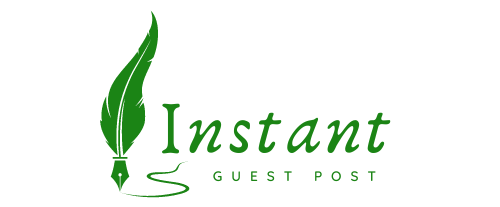Entering the soap-making enterprise could be rewarding each creatively and financially, but the key to long-term success lies in understanding find out how to value your products effectively. For those selling wholesale soap loaves, this is very critical. Pricing wholesale soap loaves too low can minimize deeply into profits, while pricing too high can push away potential clients. This guide will enable you to navigate the complicatedities of pricing wholesale soap loaves for maximum profit while guaranteeing competitiveness in the market.
Understanding the Prices
The first step in pricing your wholesale soap loaves is understanding your costs. In the event you don’t have a radical grasp of how much it prices to produce every loaf, it’s unattainable to cost your product effectively. There are major types of costs to consider: direct prices and indirect costs.
Direct Costs
Direct costs are expenses directly tied to the production of the soap loaves. This includes:
– Ingredients: The cost of soap-making ingredients like oils, butters, lye, fragrances, and colorants. Make positive you consider the quality of your ingredients. Higher-quality inputs will naturally elevate your prices, but they’ll also let you cost premium prices.
– Packaging: Even though you might be selling wholesale, soap loaves still need some form of packaging. This might embody fundamental wrapping or more elaborate packaging depending on the preferences of your buyers.
– Labor: Factor within the time it takes you to make each batch of soap. Even in case you are a small business doing everything your self, your time has value. Set a reasonable hourly wage and calculate how a lot time you spend on each loaf.
Indirect Prices
Indirect costs are not directly tied to production however are part of your overall working expenses. Examples embrace:
– Equipment: Soap molds, mixing tools, and safety gear are all mandatory expenses.
– Utilities: Don’t overlook to include the cost of water, electricity, or gas that you simply use in the soap-making process.
– Marketing and Advertising: Your website, enterprise cards, or any form of paid advertising must also be accounted for.
After you have calculated each your direct and indirect costs, you’ll have a clearer idea of the minimum quantity you want to charge to break even.
Establishing a Profit Margin
After calculating your production prices, the next step is to determine your profit margin. In wholesale pricing, the margins tend to be smaller than in retail, but they’re still crucial. A typical profit margin for wholesale would possibly range between 20% to 50%, depending on your market and competition.
For example, if it prices you $10 to produce a soap loaf, and also you want a 40% profit margin, you’ll multiply your value by 1.four, setting your wholesale worth at $14.
When setting your profit margin, consider the following:
– Market Demand: If there is sturdy demand for handmade soap, you can afford to set higher profit margins. Conversely, if the market is saturated, chances are you’ll want to offer more competitive pricing.
– Product Quality: High-quality ingredients and unique formulations can command higher prices. Customers usually affiliate handmade products with luxury, they usually may be willing to pay a premium for something that feels artisanal.
– Competition: Research your competitors to see how they’re pricing their wholesale soap loaves. Goal for a price that permits you to remain competitive without underchopping yourself.
Tiered Pricing for Different Buyers
Offering tiered pricing will help you entice totally different types of buyers while maximizing profits. For instance, you could possibly create price tiers based mostly on the amount of the order. The more soap loaves a customer purchases, the lower the price per loaf. This encourages larger orders, which can be more profitable for your business.
A typical tier construction might look like this:
– 1–10 soap loaves: $14 per loaf
– eleven–25 soap loaves: $12 per loaf
– 26–50 soap loaves: $10 per loaf
While you are giving reductions to bigger buyers, the elevated volume ought to make up for the reduced value per unit.
Positioning and Branding
Your pricing should align with your brand’s positioning in the market. If you are marketing your soap as a luxurious product, your pricing needs to replicate that. Lowering your costs too much can send the wrong signal to potential customers, making your soap seem less valuable.
On the other hand, if your brand focuses on affordability and accessibility, higher costs could alienate your target market. Striking a balance between pricing and brand notion is crucial.
Regular Worth Critiques
The market for handmade and artisanal goods is always changing. What works at the moment may not work tomorrow. For this reason, it’s essential to often review your pricing. Factors similar to rising ingredient prices, adjustments in consumer demand, and new competition can all impact your pricing strategy.
At least annually, conduct a full evaluate of your costs and pricing. Be certain that your margins remain healthy, and adjust your prices if crucial to keep up profitability.
Final Ideas
Pricing wholesale soap loaves requires a careful balance between covering costs, generating a healthy profit, and staying competitive in the marketplace. By completely understanding your costs, setting strategic profit margins, and regularly reviewing your costs, you possibly can create a pricing strategy that maximizes profitability while continuing to attract buyers. Whether or not you’re selling to small boutiques or larger retailers, these principles will assist ensure the long-term success of your soap-making business.
If you cherished this article therefore you would like to get more info relating to Wholesale Bath Bombs nicely visit our internet site.



Do you have a spam issue on this site; I also am a blogger, and I was wondering your situation; we have created some nice procedures and we are looking to exchange methods with others, be sure to shoot me an e-mail if interested.